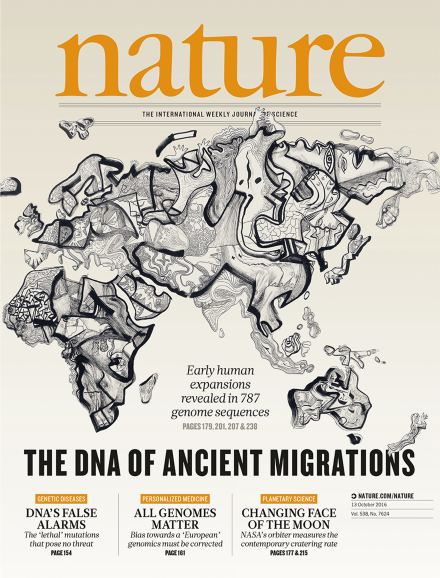Volume 538 Issue 7624, 13 October 2016
Editorial
World View
Research Highlights
Seven Days
Correction
News
Correction
News Feature
Comment
Books & Arts
Correspondence
Correction
Obituary
News & Views
-
A map of human wanderlust
Collection:
Review Article
Article
Letter
Corrigendum
Technology Feature
-
The dark side of the human genome
Collection:

